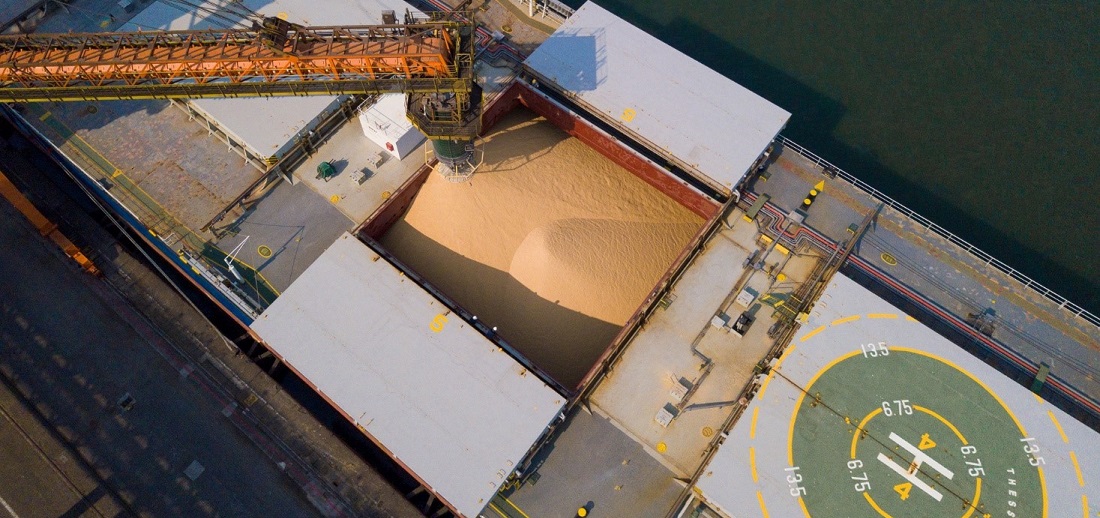
Brazil to Decentralize Grain Exports as 2024/2025 Harvest Hits Record High
Feb, 07, 2025 Posted by Gabriel MalheirosWeek 202506
During the announcement of the 2024/2025 Grain Harvest Transport Plan on Wednesday (5) in Brasília, Minister of Ports and Airports Silvio Costa Filho stated that the federal government aims to decentralize grain exports through Brazil’s ports, including Santos. The plan was unveiled alongside Transport Minister Renan Filho and Agriculture and Livestock Minister Carlos Fávaro.
The National Supply Company (Conab) forecasts a record grain harvest of 322.3 million tonnes for 2024/2025—an 8.2% increase from the previous harvest of 297.8 million tonnes.
Soybeans will drive this growth, with an expected output of 18.6 million tonnes—up 12.6% from 2023/2024—while corn production is projected at 3.9 million tonnes, a 3.3% increase.
Costa Filho presented data showing that the Port of Santos handled 43.6 million tonnes of grains and fertilizers from January to November 2024, accounting for 20.3% of Brazil’s total volume. Meanwhile, Northern Arc ports processed 55.53 million tonnes, and the ports of Paranaguá, São Francisco do Sul, and Rio Grande collectively moved 43.3 million tonnes (20.08%).
Shifting Logistics Strategy
Costa Filho noted that the Port of Santos, Brazil’s largest port asset, once handled nearly 60% of the country’s grain exports. “As the Northern Arc and other regions expand, we’re seeing a shift in the distribution of exports, which is a priority for us. This large-scale logistics plan fosters regional economic development,” he said.
Commenting on the minister’s statement, Anderson Pomini, president of the Santos Port Authority (APS), welcomed the growth of other ports. “When Santos does well, Brazil does well. And when other ports thrive, Santos benefits as well. We all work toward improving logistics and driving economic and social development. Our trade network is growing stronger and more efficient,” he said.
Pomini emphasized that Brazil’s port system operates as a national network, and the country’s entire infrastructure should be leveraged for exports. “This doesn’t mean Santos will lose cargo—on the contrary, it will continue its upward trend, especially in agribusiness exports. With a record harvest ahead, additional port infrastructure across the country will be essential,” he added.
Upgrading Key Transport Corridors
Transport Minister Renan Filho highlighted planned investments in road and rail corridors critical for grain transportation. In 2024, investments in the Northern Arc will rise from BRL 2 billion to BRL 2.6 billion, while the South /Southeast Arc will see an increase from BRL 1.6 billion to BRL 1.9 billion. The goal is to achieve a 90% improvement in the highway network across both regions.
The South/Southeast Corridor plan includes highway upgrades, concessions for five road segments, completion of key infrastructure projects, and road rehabilitation in Rio Grande do Sul.
Major projects include:
- The Trevão de Monte Alegre interchange on BR-153/365 in Minas Gerais
- The Toledo-Marechal Rondon highway widening on BR-163 in Paraná
- The Cristalina Urban Bypass on BR-050 in Goiás
- Road widening in Navegantes on BR-470 in Santa Catarina
- Road widening in Cristal on BR-116 in Rio Grande do Sul
Renan Filho also expressed his intent to accelerate work on the Midwest Integration Railway (Fico) to start operations this year, boosting soybean and corn shipments to the Port of Santos.”In the short term, this will slightly increase Santos’ grain throughput, but it’s all part of the broader strategy,” he noted.
Source: A Tribuna
-
Trade Regulations
Oct, 20, 2020
0
Brazil negotiates new free-trade agreements with Arab countries
-
Ports and Terminals
Feb, 16, 2022
0
TCP increases its operational draft
-
Ports and Terminals
Jan, 04, 2024
0
NE China port launches container ship route to South America
-
Grains
Jan, 31, 2022
0
Argentina’s soybean processing volume reached a five-year high in 2021

